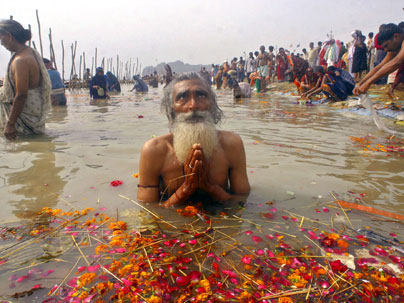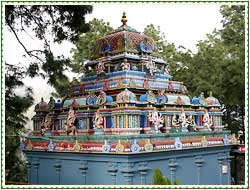Varanasi
On July 1st I start my Journey to India, first stop
 Varanasi!! I am already mentally preparing myself for the 50 hour flight to Varanasi, India. I will go to the Vancouver International Airport at 9:00 am in order to catch my 11:30 flight with the Philippine Airport. My first stop is in 14 hours and 15 minutes in Ninoy, Aquino at the Manilla International Airport. I have a 12 hour layover and I don't know what I will do during my time at the airport. From the Manilla Airport is was an 9 hour flight from the India Gandhi International Airport in New Delhi, India. Where I can catch the Neelachal Express train to Varanassi. When I am finally in Varanssi, I will have a taxi pick me up at the train station and drive me to the International Travellers' Hotel were I will be staying for a month.
Varanasi!! I am already mentally preparing myself for the 50 hour flight to Varanasi, India. I will go to the Vancouver International Airport at 9:00 am in order to catch my 11:30 flight with the Philippine Airport. My first stop is in 14 hours and 15 minutes in Ninoy, Aquino at the Manilla International Airport. I have a 12 hour layover and I don't know what I will do during my time at the airport. From the Manilla Airport is was an 9 hour flight from the India Gandhi International Airport in New Delhi, India. Where I can catch the Neelachal Express train to Varanassi. When I am finally in Varanssi, I will have a taxi pick me up at the train station and drive me to the International Travellers' Hotel were I will be staying for a month. Information on Varanasi
Varanasi is a city on the banks of the Ganges in Uttar Pradesh, 320 kilometres southeast of the state capital, Lucknow. The civilians of Varanasi rely greatly on the Ganges River. It is the holiest of the seven sacred cities in Hinduism and Kainism. It is one of the oldest inhabited cities in the world and the oldest city in India. Many of its temples were destroyed by Mohammed Gahur in the 12th century. Varanasi is the spiritual capital of India and people often refer to Varanasi as "the city of temples", "the city of lights", "the city of learning" and "the oldest living city on earth."
Places I will visit in Varanasi
Ganges River, Varanasi
The Ganges river is a trans-boundary river of India and Bangladesh. the 2,525 km river rises in the western Himalyas and flows south and east through North India into Bangladesh, where it empties into the Bay of Bengal. It is the longest river in India and the second largest river in the world. The Ganges basin is heavily populated with over 400 million people. The river is the most sacred river to Hindus and it has been a lifeline to millions of Indians who lived along its course and depended on the river for their daily needs. The river is worshipped at the goddess Ganga in Hinduism. Hindus consider the waters of the Ganges to be both pure an purifying. Moving water, as in a river, is considered purifying in Hindu culture because it is thought to both absorb impurities and them them away. Not only does the Ganges river remove physical dirt but also symbolic dirt; it wipes away the lifetime sins of the bather. The Ganges river is ranked among the five most polluted rivers in the world. Not only is it endangering humans but also 140 fish species, including the endangered Ganges river dolphin. The action plan to clean up the river has been a major fails due to corruption of lack technical expertise, Indian traditions and beliefs, and lack of support from religious authorities.
Durga Temple, Varanasi
Durga temple, also known as the "monkey temple" is one of the important temples of Varanasi. This temple is dedicated to Goddess Durga. The Durga temple was built in the eighteenth century. Bengali Maharani built the Durga temple in Nagara Style (the North Indian style of temple architecture); it is stained red with ochre. According to legends, the present statue of Goddess Durga was not made by man but appeared on its own in the temple. The Durga temple is also called Monkey temple because of the presence of large number of monkeys. In Hinduism, Durga is represented as the embodiment of shakti or female power, clad in red, riding a tiger and fully armed with Shiva's trident, Vishnu's discus and a sword. Non-Hindus can enter the courtyard of the Durga temple but not the inner sanctum. Thousands of Hindu devotees visit the Durga temple during Navratri and other auspicious occasions.
Kashi Vishwanath Temple, Varanasi
Kashi Vishwanath Temple is one of the most famous Hindu temples dedicated to Lord Shiva and is located in Varanasi, the holiest existing place of Hindus, where at least once in life a Hindu is expected to do pilgrimage, and if possible, also pour the remains of cremated ancestors on the River Ganges.The temple stands on the western bank of the holy river Ganges.The temple town, which claims to be the oldest living city in the world, with 3500 years of documented history,[1] is also called Kashi and hence the temple is popularly called Kashi Vishwanath Temple. The temple has been destroyed and rebuilt a number of times. A visit to the temple and a bath in the river Ganges is one of many methods believed to lead one on a path to Moksha (liberation). Thus, people from all over the nation try to visit the place at least once in their lifetime. There is also a tradition that one should give up at least one desire after a pilgrimage the temple
Dasaswamedh Ghat, Varanasi
Dasaswamedh Ghat is one of the most important Ghats of Varanasi. Dasaswamedh literally means the Ghat (river front) of ten sacrificed horses. According to legends ten horses were sacrificed by Lord Brahma to allow Lord Shiva to return from a period of banishment. In spite of the fact that Dasaswamedh is one of the oldest Ghats of Varanasi, dating back to many thousand years, the Ghat has remained unspoilt and clean. Dasaswamedh provides a beautiful and colorful riverfront view. A large number of Sadhus can be seen performing religious rites on this Ghat. In the evening, thousands of earthen lamps are immersed in the waters of the holy Ganges and the floating lamps give a divine look to the river at dusk.
Sankat Mochan Temple, Varanassi
Sankat Mochan temple is one of the sacred temples of Varanasi. It is located in the southern part of Varanasi, near the Banaras Hindu University. It is dedicated to the Hindu God, Hanuman. The word "Sankat Mochan" means one who helps in removing sufferings i. e. Lord Hanuman. Tulsidas, the author of the famous Hindu epic Ramacharitamanasa, founded the Sankat Mochan temple. According to Hindu mythology, one who visits the Sankat Mochan temple regularly, his wishes get fulfilled. Every Tuesday and Saturday, thousands of devotees queue up in front of the Sankat Mochan temple to offer prayers to Lord Hanuman. According to Vedic Astrology, Hanuman protects human beings from the anger of planet Saturn and those who have ill placed Saturn in their horoscope visit the Sankat Mochan temple to get remedy.
Darbhanga Ghat,Varanasi
*virtual tour of Darbhanga Ghat*
Darbhanga Ghat, a renowned holy spot among the Hindu devotes, is an ideal location to have the religious rites associated with the death of the relatives or friends. This is situated in the bank of the holy Ganges between two other Ghats famously known as Dashaswamedh Ghat and Rana Mahal Ghat. The ghat is ideally placed above an impressive building. The building serves as a place for the people to overlook the religious ceremonies in the Ghat. A temple enshrining the Shiva Lingam is an attraction to this place. The premises of the Ghat offer all kinds of facilities for performing religious rituals.
Kedar Ghat, Varanassi
*Virtual tour of the Kedar Ghat*
Kedar Ghat, a favorite temple among south India populaces and Bengalis, is a revered Ghat in Varanasi. This was constructed by the Maharaja of Vijayanagar in the southern part of Kashi. The temple dedicated to Lord Shiv. The Kedar Ghat is known for its the unique features. This holy Ghat is placed in a scenic location and is a known place for having great photography. A pond known as Parvati Kund is placed just down of the Kedar Ghat. It is believed that the water in this Kund has high healing properties.









No comments:
Post a Comment